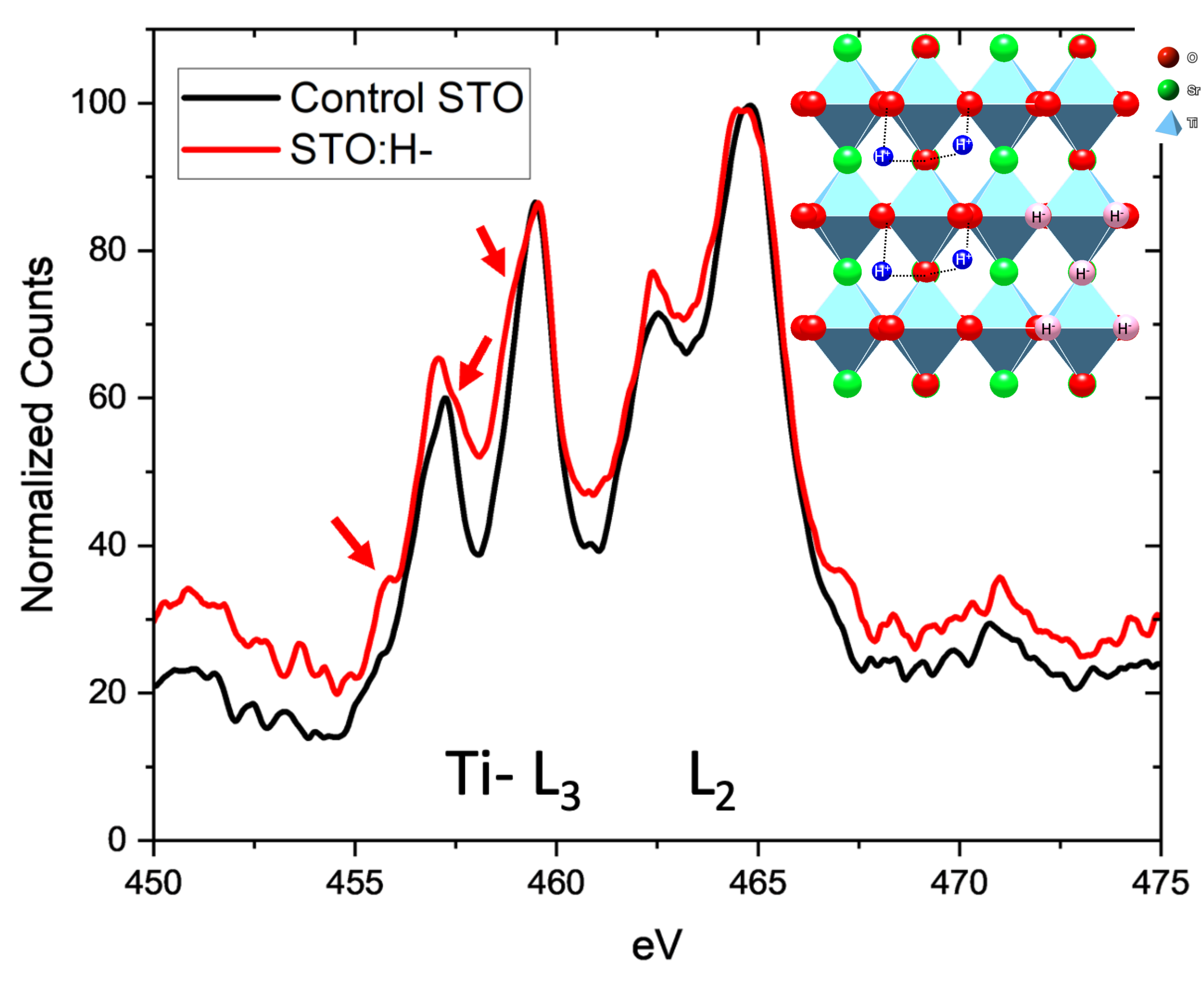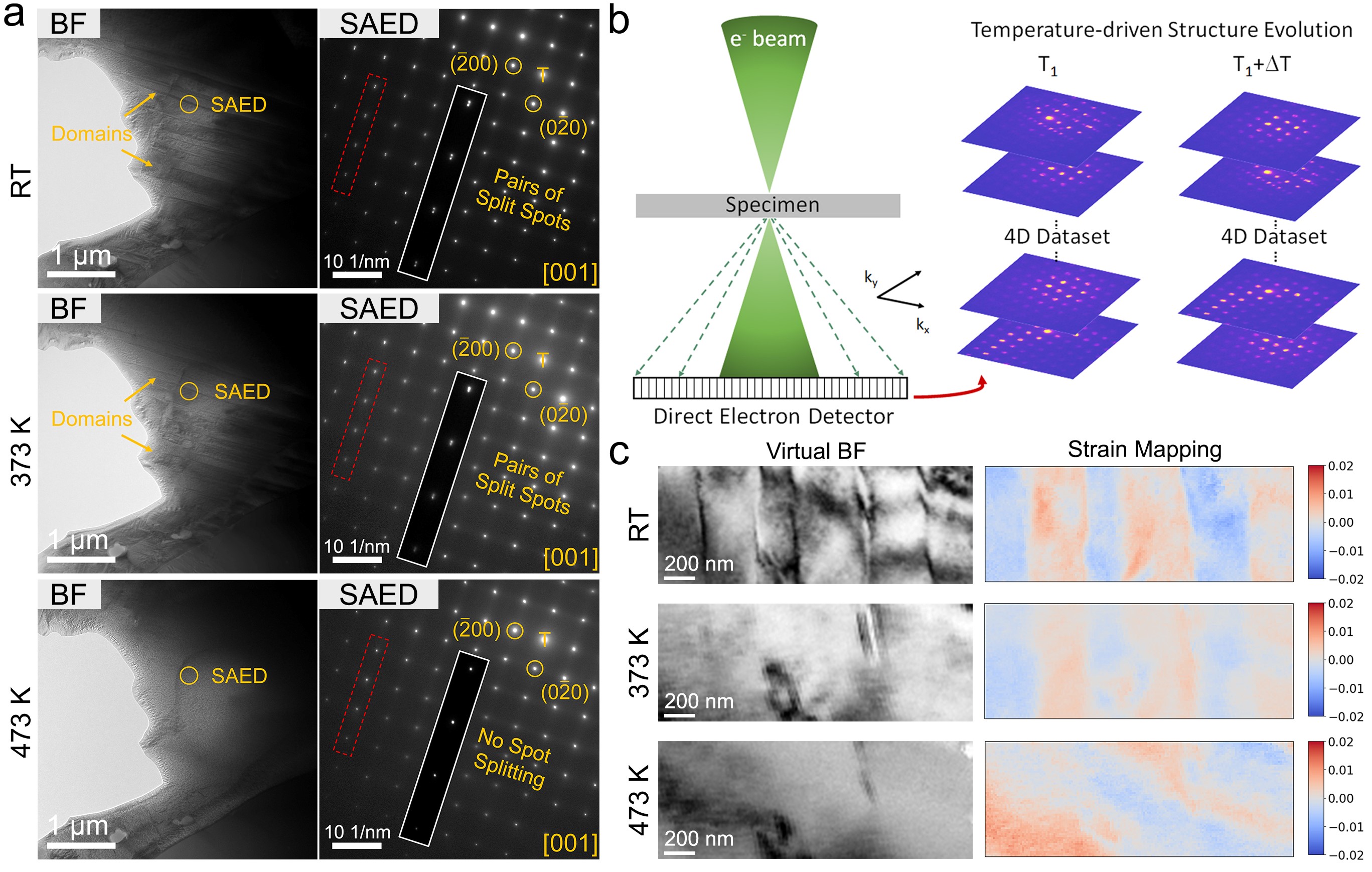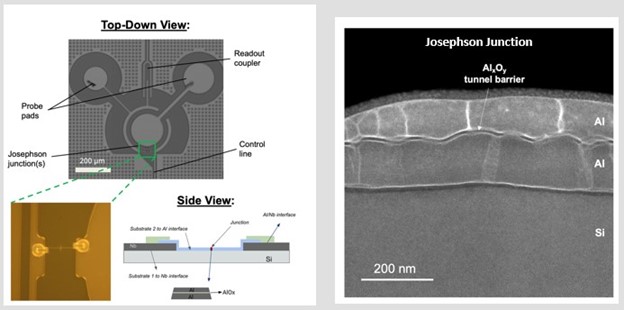Quantum and Energy Materials
(Supported by DOE-BES, NSF-MRSEC, SRC, Intel, NSF-MRI, ANL, AFOSR, NSF-DMR)
The natural evolution of functional materials’ architecture calls for their confinement in spatial and dimensional modes. Dimensional constraint arises from the ubiquitous need for materials to be confined to zero (i.e., dots), one (lines), and two (i.e., films/membranes) dimensions to enhance aerial density and possible novel properties.


We synthesize and characterize emerging 2D layered materials, including the doped and alloyed chalcogenides. In particular, we study the structure property relationship of MIMIIP2X6 (MI = transition metal cation, X = S, Se) for next generation nanoelectronics. In another project, we collaborate with multiple universities across the country to understand the incorporation and transport behavior of hydrogen species in solid state materials for applications in fuel cells/energy storage and information science. We are developing advanced analytical techniques to characterize hydrogen species at the nanoscale.
We are also interested in optimizing the performance of thermoelectric materials, and work is done to elucidate the underlying principles of their formation and properties. Work is also being done to study the structure-optical property relationships in ternary chalcogenides systems to optimize the synthesis of all-inorganic photovoltaics. Through collaborations with industry leaders such as Rigetti Computing, recent efforts have also focused on improving the coherence of superconducting transmon qubits for next-generation quantum computers.


Embedded in these initiatives are varied in-situ and ex-situ characterization, using photon, phonon, ion, scanning probe and electron microscopy. This is a multi/interdisciplinary effort done in collaboration with groups throughout NU Materials Science and Engineering, Physics and Astronomy, Electrical Engineering & Computer Science, Chemistry, and Applied Physics.
Representative Publications:
-
Li, W. S.; Carter, L. M.; Almassalha, L. M.; Pujadas-Liwag, E. M.; Kuo, T.; MacQuarrie, K. L.; Carignano, M.; Dravid, V.; Kanemaki, M. T.; Szleifer, I.; Backman, V. Mature chromatin packing domains persist after RAD21 depletion in 3D. Science Advances 2025 https://doi.org/10.1126/sciadv.adp0855.
- Li, W. S.; Carter, L.; Almassalha, L.; Pujadas, E.; Carignano, M.; Bleher, R.; dos Reis, R.; Backman, V.; Dravid, V. “Electron Tomography Finds Three-Dimensional Chromatin Packing Domain Structure in Single Cell Different from Topological Associated Domains.” Microscopy and Microanalysis 2024, 30 (Supplement_1), ozae044.361. https://doi.org/10.1093/mam/ozae044.361.
- Lee, Y.-S.; Lebedev, D.; Qian, E. K.; Lee, P.; Kanatzidis, M. G.; Hersam, M. C.; Dravid, V. P. Understanding the Dynamic Liquid-Assisted Chemical Vapor Deposition Growth of Copper Telluride and Its Low-Temperature Phase Transition. Crystal Growth & Design 2023, 23 (5), 3769–3777. https://doi.org/10.1021/acs.cgd.3c00149.
- Liu, Y.; Xie, H.; Li, Z.; Zhang, Y.; Malliakas, C. D.; Al Malki, M.; Ribet, S.; Hao, S.; Pham, T.; Wang, Y.; Hu, X.; dos Reis, R.; Snyder, G. J.; Uher, C.; Wolverton, C.; Kanatzidis, M. G.; Dravid, V. P. Unraveling the Role of Entropy in Thermoelectrics: Entropy-Stabilized Quintuple Rock Salt PbGeSnCdxTe3+x. J. Am. Chem. Soc. 2023, 145 (15), 8677–8688. https://doi.org/10.1021/jacs.3c01693.
- Chen, Z.; Cui, H.-H.; Hao, S.; Liu, Y.; Liu, H.; Zhou, J.; Yu, Y.; Yan, Q.; Wolverton, C.; Dravid, V. P.; Luo, Z.-Z.; Zou, Z.; Kanatzidis, M. G. GaSb Doping Facilitates Conduction Band Convergence and Improves Thermoelectric Performance in N-Type PbS. Energy Environ. Sci. 2023, 16 (4), 1676–1684. https://doi.org/10.1039/D3EE00183K.
- Xie, H.; Li, Z.; Liu, Y.; Zhang, Y.; Uher, C.; Dravid, V. P.; Wolverton, C.; Kanatzidis, M. G. Silver Atom Off-Centering in Diamondoid Solid Solutions Causes Crystallographic Distortion and Suppresses Lattice Thermal Conductivity. J. Am. Chem. Soc. 2023, 145 (5), 3211–3220. https://doi.org/10.1021/jacs.2c13179.
- Cheng, M.; Iyer, A. K.; Douvalis, A. P.; Ribet, S. M.; Kanatzidis, M. G.; Dravid, V. P. Cation Segregation in Alloyed Thiophosphates Fe2–XCoxP2S6. Chem. Mater. 2023. https://doi.org/10.1021/acs.chemmater.2c03738.
- Cheng, M.; Iyer, A. K.; Zhou, X.; Tyner, A.; Liu, Y.; Shehzad, M. A.; Goswami, P.; Chung, D. Y.; Kanatzidis, M. G.; Dravid, V. P. Tuning the Structural and Magnetic Properties in Mixed Cation Mn x Co 2– x P 2 S 6. Inorg. Chem. 2022, 61 (35), 13719–13727. https://doi.org/10.1021/acs.inorgchem.2c01116.
- Shehzad, M. A.; Lee, Y.-S.; Cheng, M.; Lebedev, D.; Tyner, A. C.; Das, P. M.; Gao, Z.; Goswami, P.; Reis, R. dos; Hersam, M. C.; Chen, X.; Dravid, V. P. Vapor–Liquid Assisted Chemical Vapor Deposition of Cu2X Materials. 2D Mater. 2022, 9 (4), 045013. https://doi.org/10.1088/2053-1583/ac8435.
- Lee, Y.-S.; Abedini Dereshgi, S.; Hao, S.; Cheng, M.; Shehzad, M. A.; Wolverton, C.; Aydin, K.; dos Reis, R.; Dravid, V. P. Probing the Optical Response and Local Dielectric Function of an Unconventional Si@MoS2 Core–Shell Architecture. Nano Lett. 2022, 22 (12), 4848–4853. https://doi.org/10.1021/acs.nanolett.2c01221.
- Xie, H.; Liu, Y.; Zhang, Y.; Hao, S.; Li, Z.; Cheng, M.; Cai, S.; Snyder, G. J.; Wolverton, C.; Uher, C.; Dravid, V. P.; Kanatzidis, M. G. High Thermoelectric Performance in Chalcopyrite Cu1–XAgxGaTe2–ZnTe: Nontrivial Band Structure and Dynamic Doping Effect. J. Am. Chem. Soc. 2022, 144 (20), 9113–9125. https://doi.org/10.1021/jacs.2c02726.
- Shehzad, M. A.; Das, P. M.; Tyner, A. C.; Cheng, M.; Lee, Y.-S.; Goswami, P.; Reis, R. D.; Chen, X.; Dravid, V. P. Synthesis of Layered vs Planar Mo2C: Role of Mo Diffusion. 2D Mater. 2022, 9 (1), 015039. https://doi.org/10.1088/2053-1583/ac43fa.
- Hinamoto, T.; Lee, Y.-S.; Dereshgi, S. A.; DiStefano, J. G.; dos Reis, R.; Sugimoto, H.; Aydin, K.; Fujii, M.; Dravid, V. P. Resonance Couplings in Si@MoS2 Core–Shell Architectures. Small 2022, 18 (17), 2200413. https://doi.org/10.1002/smll.202200413.
- Cheng, M.; Lee, Y.-S.; Iyer, A. K.; Chica, D. G.; Qian, E. K.; Shehzad, M. A.; Dos Reis, R.; Kanatzidis, M. G.; Dravid, V. P. Mixed Metal Thiophosphate Fe 2– x Co x P 2 S 6 : Role of Structural Evolution and Anisotropy. Inorg. Chem. 2021, 60 (22), 17268–17275. https://doi.org/10.1021/acs.inorgchem.1c02635.

